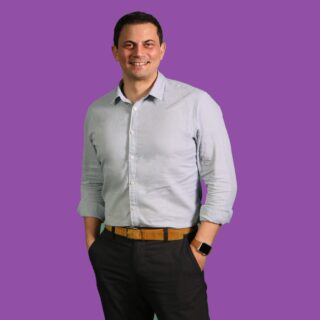Financial Forecasting – Lifescience Example
Financial Forecasting – Lifescience Example
An example financial forecast for a Lifescience startup case that uses our simple-to-use financial forecasting tool.
This nugget was developed by Dr. Johan Björck and Dr. Ben Graziano.

Case Description
Frank had surgery on his knee where doctors replaced his arthritic knee with an artificial implant 3 years ago. An avid hobby engineer, he had studied the internet extensively before the operation to better understand what was about to happen. His sister in law was a practicing general surgeon and he had engaged her in discussions on the subject as often as possible. In the process, he discovered the benefits of using biocompatible material for implants compared to more traditional materials. As he was continuously reminded of the continued pain in his knee, he became obsessed with the idea of a biocompatible implant. He spent a lot of money on a 3D printer and other equipment to try out a wide range of materials and through persistence and sheer luck he had a break-through. As a consequence, he managed to register a patent a couple of weeks ago. Frank believed that the product could be a huge commercial success and was now willing to initiate next steps.
To get his implant approved by authorities he would have to go through clinical trials. After having talked to different experts, the duration of the trials was estimated to 3 years. Estimates however ranged from 9 months to 6 years. Needing to finance his living and through a lack of industry experience, Frank would hire an external firm to conduct all the required work but still needed different people to coordinate and provide the necessary documentation. He could finance the first trial stage with his own money, from a recent inheritance, which he understood was a prerequisite to find equity investors to bring on-board. With a patent in place, he wanted to minimize ownership dilution through a slow and steady expansion of staff and other costs. He would still need an estimated 1 million CHF of external financing for 10% of the company and extensive own work to finish the clinical trials. He would also hire 2-3 medical experts to work as advisors to help understand the entire process. In return, he would give them 1% of the company each. With a finished commercial product, Frank estimated the market potential to 90 000 procedures per year worldwide (less than a 10% market share) with an average income per implant of 7 500 CHF. With outsourced production, the cost of production would amount to 1 500 CHF per implant.
When everything was setup, Frank wanted to exit his investment by selling it to a larger company with vastly better distribution capabilities and the opportunity to run different national trials and commercialize the product worldwide. With a sales potential of 500 million CHF and expected annual profits after all distribution and marketing costs for a larger company in excess of 50 million CHF, Frank thought he could sell the company for 500 million CHF, depending on the patent protection expiry and further development costs for next generation implants. The commercial life for one specific generation medical device typically amounted to only 24 months even though the patent duration could be a total of 20 years.
The Frank medical implant start-up case shows the enormous potential if a product can be exclusive and protected by patents even for only shorter periods of time. There are however extensive hurdles to receive a medical approval, both in terms of time and money, and in terms of the capabilities needed to reach full market potential. However, if a clear commercial case can be presented the dilution can be kept to a minimum given the vast potential upside for investors and equity participating staff. For that to happen, first steps need to be undertaken to prove the viability and commerciality of the internally developed product. It is therefore important to spend some time to get the story right and run the numbers to show the attractiveness of your idea to any person you expect to invest in your idea. Be it in monetary terms or their personal time. Frank expected to be very rich in a few years’ time.
Download the example spreadsheet below.
Note: The example sheet is built in version 4.00 of the tool and may contain some bugs that have since been fixed. You can download the latest blank version of the spreadsheet and get more instructions for the tool by going to the Financial Forecasting Template learning nugget.
Attachments
Startup Accelerator Financial Forecasting Tool Example Case - Lifescience
DownloadYou might also be interested in:




